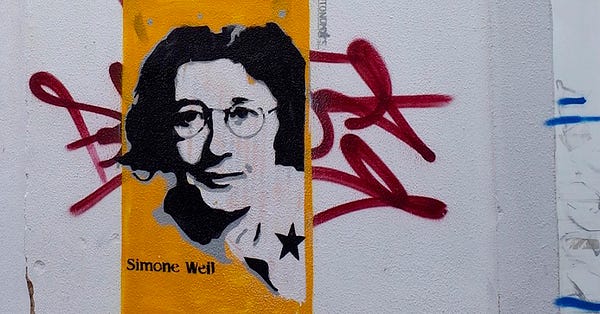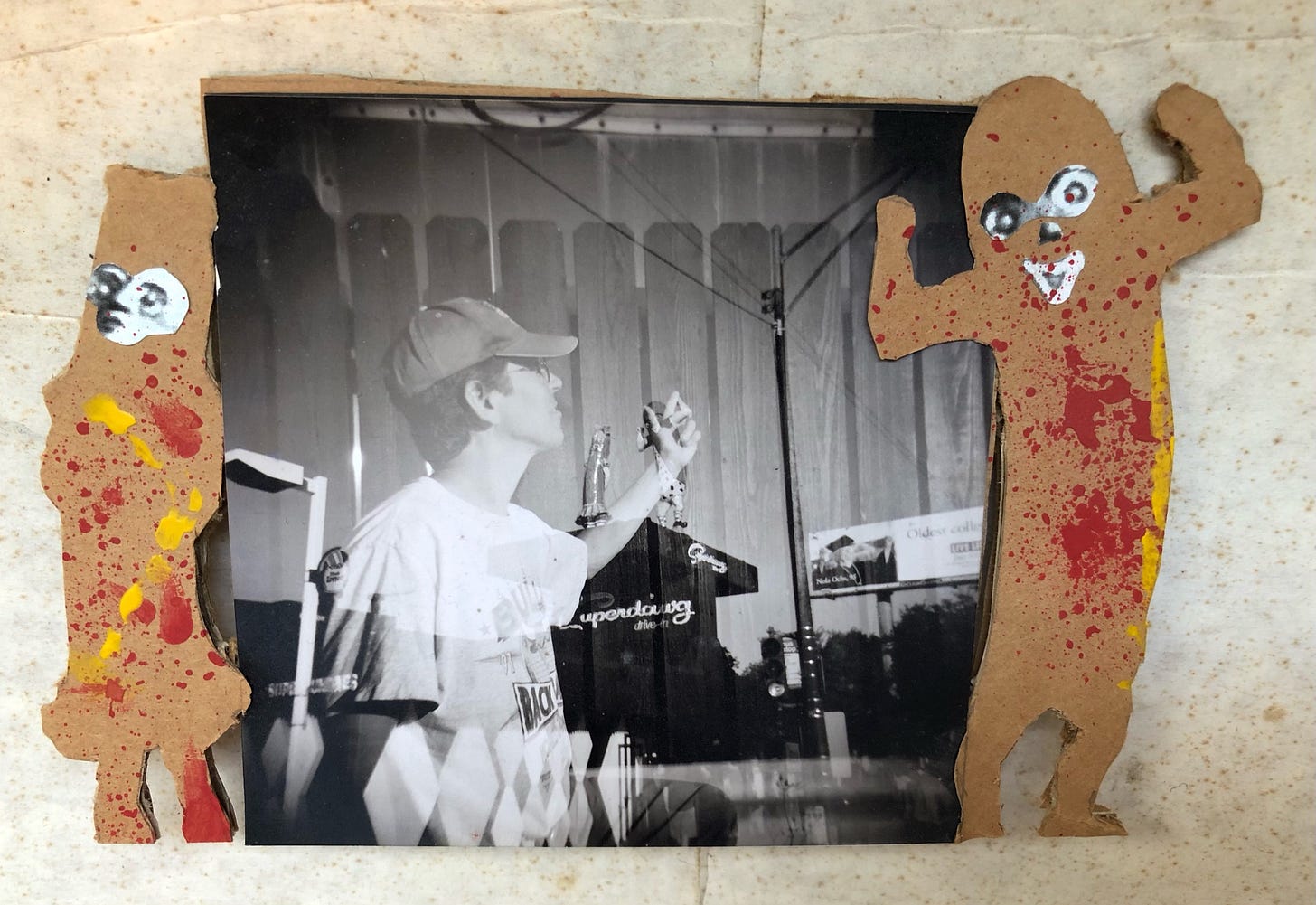Hello Readers:
Some years ago—maybe three or four—I had lunch in Lexington, Mass., with the writer Wen Stephenson. He told me about his interest in the work of Simone Weil (I thought it was pronounced “Wile,” I admitted; “Vey,” he corrected me). I knew of her only because my mother, in her spiritual wanderings many years ago, had taken an interest in Weil’s book Waiting for God.
So when Wen told me recently he wanted to write an essay about Robert Zaretsky’s new biography The Subversive Simone Weil, I knew he was prepared. We published his essay on The Baffler site last month, and I’m still thinking about it. Most of us trudge through such a polluted media swamp in our daily rounds; whatever “discourse” we have in this country seems designed to make us more stupid. The way Americans argue about freedom and “cancel culture” lately is especially fatuous. If you want to do something good for your mind, spend some time reading what Wen has written here—he discusses Weil’s way of thinking about religion, ideology, and totalitarianism, and about affliction, and about how Weil was a walking set of contradictions who nevertheless lived “an anti-totalitarian life.”
Weil not only used totalitarian in a literal sense, to refer to specific all-powerful and controlling state systems. She also used it in a more figurative or cultural sense, as a repressive mindset, a coercive social and institutional tendency, an intrinsic characteristic of the all-devouring “collective passions,” what she sometimes called the “social Beast.”
The Social Beast doesn’t know what to do with a piece of writing like this; it is full of paradox, not bellicose simplicity. Nevertheless, I took to Twitter to recommend it to my hundreds of inattentive followers. And I hereby recommend it to my dozens of avid newsletter readers.


Let George do it
And that leads to this important news: we have a new critical essay by that aforementioned George S. in the latest issue of The Baffler. The rule for thinking people in this Great Nation is: whenever you have the opportunity to read the latest from George Scialabba, do not waste another moment. Here he considers the latest work of Louis Menand, The Free World: Art and Thought in the Cold War.
The Free World is intellectual history, primarily a narrative of ideas talking to ideas and works of art talking to works of art, while also trying to take into account “the underlying social forces—economic, geopolitical, demographic, technological—that created the conditions for the possibility of certain kinds of art and ideas.”
In fact, there is much in the latest issue of our Baffler to recommend. Take a look here at the table of contents. I especially liked working with historian Simon Balto, who produced a powerful look back at Fred Hampton, whose assassination by Chicago police in cahoots with the FBI, never loses its ability to shock. Prof. Balto was teaching at the University of Iowa last year—but as of this fall will be joining the faculty of the University of Wisconsin at Madison. Badger Pride, for those who celebrate!
Hot dogs
I’ll never get over the time Mitt Romney was asked what his favorite meat is, and he said “hot dog.” But many of us really do like the occasional hot dog, especially if we have a fond awareness of The Place of the Hot Dog in Chicago Culture. (Companion dissertation: The Place of the Bratwurst in Wisconsin Culture.) When I had the memorable experience of taking a road trip to Chicago in 2008 with one of my dear nephews, we drove quite a bit out of our way, Northwest up Milwaukee Avenue, to visit the Superdawg Drive-In, just because a road-food book had written it up. I am happy to report that in this updated map of hot dog stands in Chicago, Superdawg has survived. Many other stands have not. You can investigate further, thanks to this enterprising hot dog chronicler:
I don’t even remember whether I was blown away by the food . . . I think it was good. The retro style, of course, would appeal to those of us who like old-style bowling alleys. (The Neph and I also visited Southport Lanes, a bar with four bowling lanes, with pins still set by human pin-setters.) I do remember the two large hot-dog characters on the roof of the drive-in giving a friendly wave to approaching customers. That inspired my creative nephew to later send me a piece of photo-art he created to mark the event. (He liked making intentional double-exposures.) This art still has a prominent spot in my home office, after all these years. In the end, maybe it’s not about the hot dogs, but about the memories you make as you drive out of your way to find the hot-dog stand.
Postscripts:
—Got some good “reader engagement” from last month’s letter “I’m Gonna Take Risks.” Click on this link if you missed it. Update: so far I have taken very few risks.
—Good argument here in the Boston Globe Magazine, though, for not bringing back the handshake, post-pandemic. What we’re going to need is a graceful way of waving off the handshake when someone reaches out. Maybe we go back to the 1960s and give the peace sign. It can double as a “get the vaccine” signal.
—The aforementioned nephew is returning from Spain soon and will start at Princeton in the fall as a Princeton Mellon fellow in Architecture, Urbanism & the Humanities. Very proud of him.
—Gonna write about native plants and also about scything sometime this summer. And maybe about the latest in bowling news.
—Thank you for reading!






